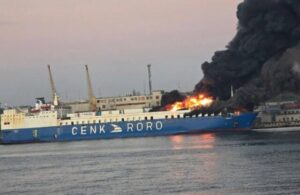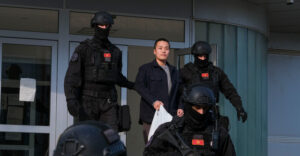Water drainage from houses, traffic disruptions and even fires caused by lightning were some of the problems caused by the 48-hour bad weather that hit the country.The weather subsided late in the afternoon and today summer will return with temperatures rising up to 35 degrees Celsius and local rains and sporadic thunderstorms in the northern and eastern Aegean.
The bad weather on Wednesday was focused in northern Greece, where residents of some areas received warning messages from 112 and yesterday it “hit” Attica with 112 ringing in citizens’ phones a few minutes after 12.00.
The bad weather, until the early midday hours of Thursday, mainly affected the northern parts of the county. The highest rainfall was recorded at the station of Agios Stefanos and was equal to 53 mm.
At the same time, according to the director of IEPVA/EAA research, Dr. Kostas Lagovardos, about 1,200 thunderbolts were recorded in the wider Attica region by 6 p.m.
“And the day became night. Long hours of thunderstorms occurred on Thursday 04/07 in Attica, with about 1,200 thunderbolts recorded in the wider area by 6pm. Below is an image of Athens from our camera in Penteli as well as a map of rain until 6 pm in Attica,”
“The highest amount of rain was recorded at our network station in Agios Stefanos, with 53 millimeters of rain in one hour. Our dense network of stations allows us to continuously monitor the phenomena in an area, greatly assisting our work and the services we provide,” he concluded in his post.
According to Meteo, the heaviest rainfall (until about 18:30) was recorded in Halkidiki, Central and Eastern Central Greece and Northeastern Peloponnese. As shown in the relevant table, which presents the 8 stations of the meteo.gr / National Observatory of Athens network of automatic weather stations that recorded the highest rainfall until the above mentioned time, the largest volume of water fell in Stefanis of Boeotia (57 mm), followed by Kassandria in Halkidiki (55 mm) and Agios Stefanos of Attica (53 mm).
As far as Attica is concerned, according to the recordings of the weather stations of our network, the strongest phenomena were recorded in the northern parts of the prefecture. The map below shows the geographical distribution of the amount of rain that fell in Attica and in part of the neighbouring prefectures.
Specifically, initially Northern Greece was affected, followed by the central and Sporades regions and finally Attikovo and northeastern Peloponnese. In fact, as Mr. Kolydas stressed, the bad weather began to fade from Myrtoo, moving further east.
At the same time, due to heavy rain and storms in Attica and Central Macedonia, the Fire Brigade received 86 calls, mainly for water pumping.
Specifically:
– In the Region of Attica 80 calls and 14 water pumping operations were carried out
– In the Region of Central Macedonia 6 calls and 4 water pumping operations were carried out
Watch video from Ekali
Watch video showing the hailstorm in St. Stephen:
A message was sent via 112 for severe weather in Thessaloniki, Pieria, Halkidiki and Kavala.
In Central Greece, the weather affected Vathia Longa in Fthiotida, Styli, Stefanis, Arachova, Zeli, Sesi Parnassos, Amfiklia, Tanagra, and Vathystalo Parnassos. Rainfall also occurred in Lamia, Livadia, Levokohori Fthiotida, Parnassos.
The storm turned the streets of Lamia into torrents even in the city centre. The fire department was called in to pump water from shops.
The fire brigade was called in to help the city’s water supply.
In Thessaly the phenomena hit Smokovo, Kastania and Pertouli. Rain also fell in Samothrace.
Ask me anything
Explore related questions





